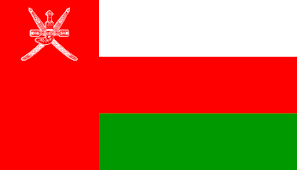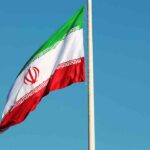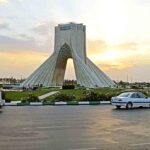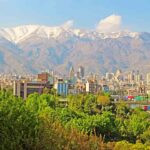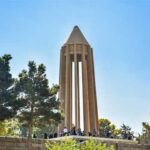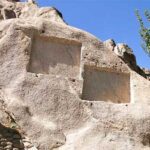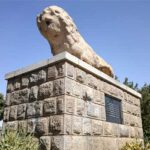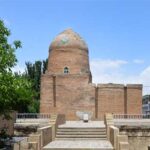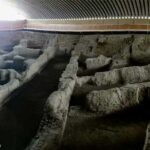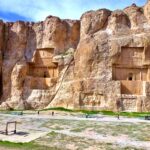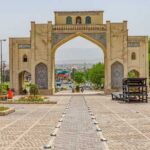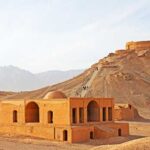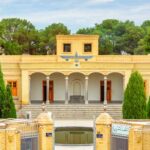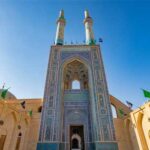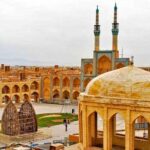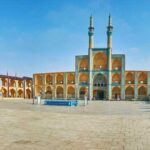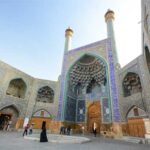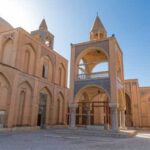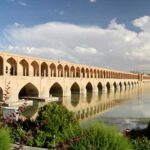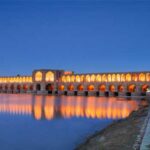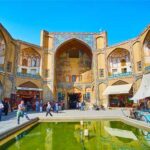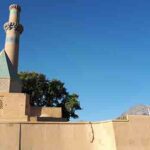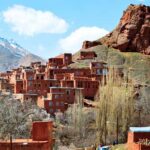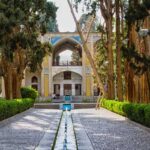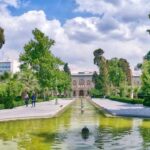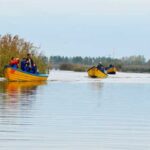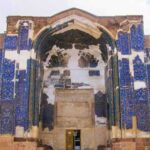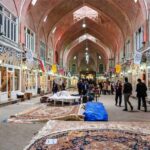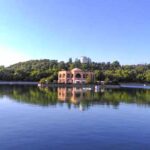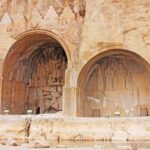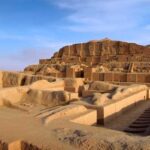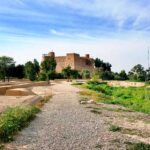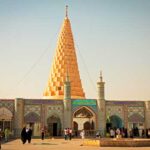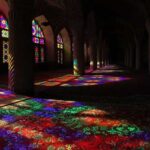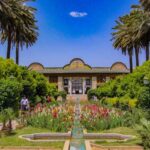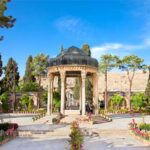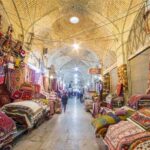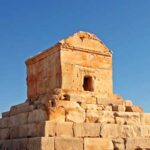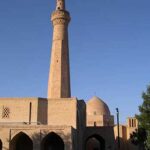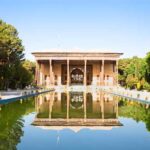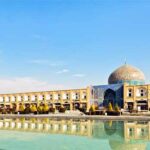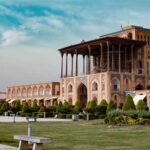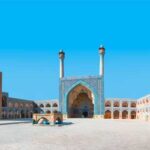- Home
- Tours
- Oman Tours
- Adventure Tours
- Grand Tour of Iran
Grand Tour of Iran
Visited Countries:
description
The Persian-speaking group brings together the majority ethnicities of Iran, such as the Persians, the Kurds, the Gilakis, the Mazandaranais, the Lors, the Tats, the Baluchis. Other ethnic groups including the Azeris, Turkmens and Qashqai form the influential minorities of the country. The rest is for large Semitic groups, especially Arabs and Assyrians, or other Indo-European minorities like Armenians. On the road to Persia's global assets, give onto spectacular perspectives, the mosaic of ethnic groups fascinates us. The ethnicities of Persia possess the distinguished dialect, cuisine, way of life and rituals.
This new architecture of the Iranian renaissance brings them closer together and distinguishes them from the cities of the West. However, the country's original tradition and rituals are still part of Iranian way of life.
Besides of the interesting World Heritages such as palaces, mosques, archeological sites, burial places, reliefs and Persian typical gardens, travel to Iran is experience of difference climates. Located 28 meters below sea level, despite Iran's predominantly arid climate, the Caspian Sea is an exception with a Pontic climate all year round. In the west of the territory, you will enjoy lower temperatures, severe winters with heavy snowfall. The eastern and central basins are arid where you can explore occasional deserts.
We are proud to provide the trip for you in which you can admire the treasures of Iran, many of which are listed in UNESCO World Heritage Sites. This journey, gives you the opportunity to follow the footsteps of the most powerful Empires of the history and touch the lifestyle of different ethnicities of Iran.
Tehran-Anzali : 364 KM
Depart Tehran for Anzali. On the way you make a stop in Shazdeh Hussein Mausoleum in Qazvin which dates back to 16th century.
Anzali-Ardebil-Tabriz : 464 KM
Depart Anzali for Tabriz in the morning. On the way, make a stop in Ardebil and visit Sheikh Safi al-din Complex; the burial site of the founder of Sufism and the great ancestor of Safavid Dynasty, which has also been listed in UNESCO World Heritage Sites.
Tabriz-Kandovan-Takab : 390 km
In the morning depart Tabriz for Takab. On the way, make a stop in Kandovan Village, a rocky village in which you can find the houses carved in the rocks. Then you proceed to Graved Towers of Maragheh.
Hamadan
This day is devoted to discovering the history of Iran. Start your sightseeing in Hamedan by visiting Ganjnameh Inscription (literally, means treasure book), a set of cuneiform characters written in three languages and including the edicts of Achaemenid kings. Next, visit Avicenna Tomb, the burial place of the great Iranian philosopher, scholar and physician. Then explore Stone Lion of Hamadan, constructed by Alexander the Great in the honor of his general and Esther and Mordechai Tomb, known as the most important religious site for Jews in Iran. At the end, visit Ecbatana; chosen as the Medes’ capital in the late 8th century BC by Deioces.
Kermanshah-Shushtar : 410 km
Visit Tekyeh Moaven Al Molk in Kermanshah and admire its unique tilling dates back to Qajar dynasty. Depart Kermanshah for Shushtar where you can admire Shushtar Historical Hydraulic System; listed in UNESCO World Heritage Sites containing an interconnected set of bridges, dams, mills, waterfalls and canals.
Ahwaz-Bishapur-Shiraz : 480 km
Depart Ahwaz for Shiraz. Call in at The city of Bishapur and its related components located at the vicinity of Chogan valley. The most important archeological monument of this city is Anahita Temple with a worldwide reputation, which shows the importance of water among the Aryans and Zoroastrian religion.
Shiraz-Persepolis-Shiraz : 130 km
You will spend whole day discovering ancient Persia. In the morning, go on an excursion to Persepolis, the ancient capital of Persia with its wonderfully well-preserved remains, and Naqsh-e Rustam, containing four graves of the first Achaemenid Emperors, Darius the Great, Xerxes, Artaxerxes I and Darius II, carved into the cliff. On the way back, you visit Quran Gate.
Yazd
Enjoy your sightseeing in Yazd by exploring Towers of Silence in which you get familiar with the ancient funeral ceremonies. Afterwards, head Towards Zoroastrian Fire Temple where the holy fire has been maintained for more than 1100 years. Then you proceed to Water Museum, located in a restored mansion with a visible qanat running underneath. Afterward you visit principal and historical square of city, dating back to 15th century. Your next exploration is Jameh Mosque of Yazd where you get fascinated with Persian architecture. At the end, you stroll in the Historical District in Yazd, listed in UNESCO World Heritage Sites.
Isfahan
In Isfahan, you visit Si-o-se Pol and Khaju Bridges, which have spanned the Zayandehrud River. Then head for the Vank Cathedral, constructed with an inspiration from Saint Stepanos Monastery and influenced by Iranian and Italian art, and its Museum. Next, enjoy Music Museum of Isfahan in which you can listen to every music you wish and visit Iranian traditional music instruments. At the end, visit Grand Bazaar of Isfahan, one of the greatest and luxurious trading centers in Safavid era.
Isfahan-Kashan-Tehran : 500 km
Depart Isfahan for Tehran. On the way, visit Jameh Mosque of Natanz enjoying unique tiling and brickwork in the structure of its minaret and dome. Then visit the Historical Village of Abyaneh, also known as the red village because of its red soil and house. At the end, visit Fin Garden in Kashan, listed in UNESCO World Heritage Site as an example of Persian Garden.
Tehran
Start your day by exploring Tehran including National Museum of Iran, in which you see an overview of different Persian dynasties, each of which has a number of exhibits. Then head for Golestan Palace, listed in UNESCO World Heritage Sites and a brilliant example of an important period in the history of Persia where the society starts a new era of modernism. The last site to visit in Tehran is National Jewelry Museum of Iran where you can see a collection of dazzling royal gemstones, especially Daria-e Noor (literally means the sea of light).
Alternative to National Jewelry Museum: Carpet Museum of Iran.
Anzali-Masuleh-Anzali : 200 KM
Enjoy boat riding in Anzali Lagoon, where reed beds and water lilies offer you an eye-catching scenery. Then go for a stroll in the Historical Village of Masuleh, a must-see village with a great architectural design built on the mountain.
Tabriz
This day will be dedicated to the discovery of Tabriz, a historical city dating back to 4500 years ago. First, start your sightseeing by visiting the Archeological Museum of Azerbaijan, the major archaeological and historical museum in Tabriz, and Blue Mosque , one of the architectural masterpieces in the Islamic era. Then proceed to Grand Bazaar of Tabriz, listed in UNESCO World Heritage Site. At the end, you go for an enjoyable stroll in El Goli Park, which dates back to the late 18th century and is considered as one of the symbols of the city.
Takab-Takht-e Soleyman-Hamadan : 310 km
Depart Takab for Hamadan. On the way visit Takht-e Soleyman, the most distinguished social center and temple in pre-Islamic era, which was in the peak of prosperity and power in Ashkanian and Sassanid era.
Hamadan-Bisotun-Kermanshah : 194 km
In the morning, depart for Kermanshah. On the way, visit Anahita Temple in Kangavar then proceed to Bisotun Inscription in which you can find many historical treasuries such as the inscription of Darius the Great and Hercules Sculpture, and Taq-e Bostan where you can find the series of large rock reliefs from Sassanid era dating back to the 3th century, which includes a series of reliefs demonstrating crowning ceremony of Sassanid kings, haunting and playing harp.
Shushtar-Susa-Ahwaz : 214 km
In the morning, depart Kermanshah for Ahwaz where the history of human habitation dates back to 2700 BC. First, visit Tchogha Zanbil Ziggurat, built in the honor of the main god. Then you discover Haft Tapeh Archeological Hills, in which the remains of Kabnak Elamite City was found in the excavations, and its Museum. Your next exploration is the remains of Apadana Palace, an Achaemenid site, located in Susa, home to a vast UNESCO-listed archaeological site and one of the oldest inhabitation origins of humans in the world dating back to 4000 BC. At the end you will visit the burial place of the Jewish Daniel, revered as a prophet in Christianity and Islam.
Shiraz
In Shiraz, you explore Nasir-ol-molk Mosque; also known as the Pink Mosque. Afterwards, you visit Narenjestan e Ghavam Garden and enjoy the beautiful orangery gardens. Next, you proceed your sightseeing to Hafiz Tomb where you appreciate a great poet who was also admired by Goethe. Finally, you end the day by visiting Ali Ibn Hamzeh Holy Shrine and Vakil Bazaar; a traditional covered bazaar located at the center of Shiraz enjoying natural air conditioning, arches and stunning architecture.
Shiraz-Pasargadae-Yazd : 453 km
Depart Shiraz for Yazd, also known as the city of wind catchers. On the way, visit Pasargadae, the first royal capital of Achaemenid in which you will find the tomb of Cyrus the Great. Then proceed to Abarkuh and visit Aghazadeh Historical Mansion including two-story wind catchers functioning as a cooler and a pavilion functioning as a light supplier.
Yazd-Nain-Isfahan : 324 km
Depart Yazd for Isfahan, the capital of Iran in Safavid era. On the way, visit Narin Castle dating back to 4000 years ago, in Meybod. Continue to Jameh Mosque of Nain, built about 1000 years ago with an inspiration from Prophet Mosque in Medina. Finally, you visit Kavir Anthropology Museum, the pattern of traditional houses of the central deserts in Safavid era.
Isfahan
Continue your sightseeing by visiting Chehel Sotoun Palace (Forty Columns), a brilliant example for Persian garden listed in UNESCO World Heritage Site. Next, Head Towards Naqsh-e Jahan Square, the second largest square in the world, and the monuments around including Imam Mosque, a stunning monument at the head of the square; Sheikh Lotfollah Mosque, also known as the mosque of women; and Ali Qapu Palace in which the important meetings of the king with ambassadors and other politicians were carried out. At the end, take some leisure time in the afternoon.
Departure Tehran
Transfer to Imam Khomeini International Airport for flight home.
